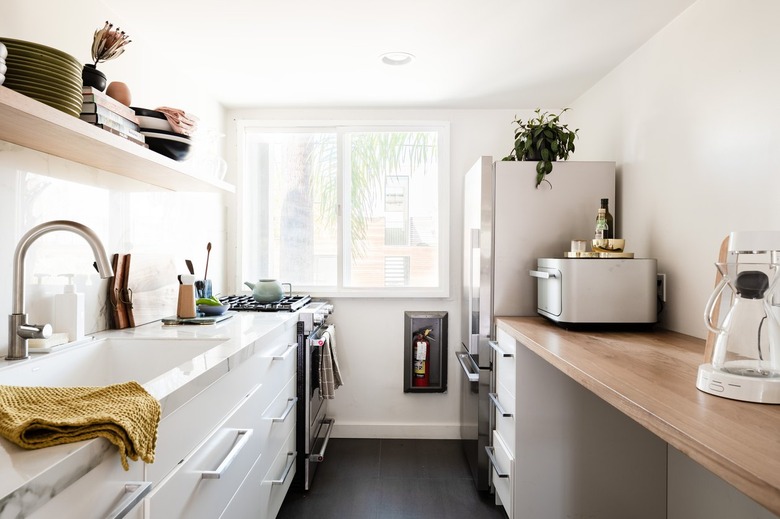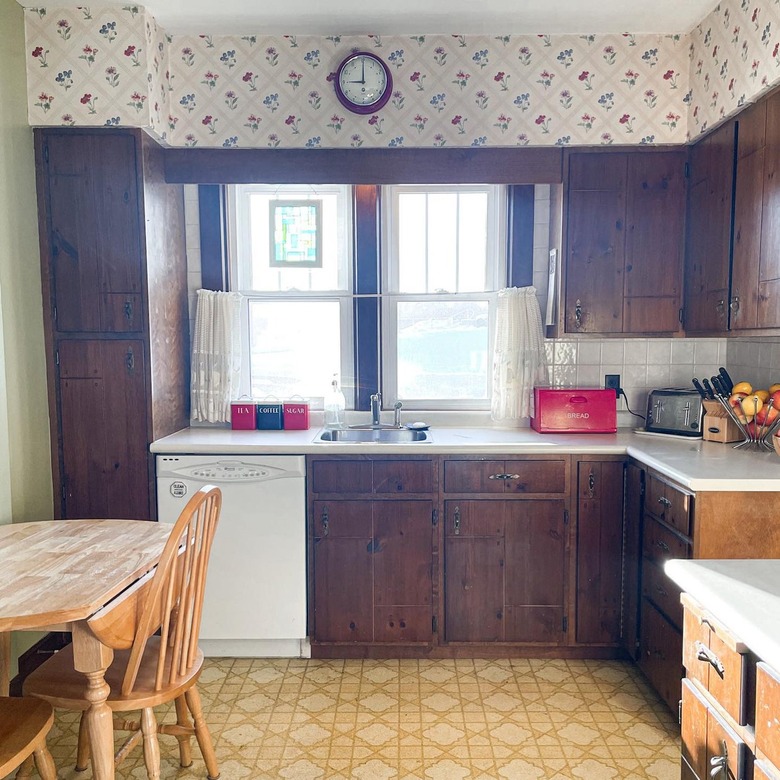Why Do Old Houses Have Small Kitchens?
There's something delightfully charming about old homes. Yet, they often boast quirky features — like telephone nooks, slits in the medicine cabinets, and random toilets in the basement (?!).
Many old houses also have small kitchens, which can be super perplexing to us modern-day folks. After all, we're used to seeing the kitchen as one of the biggest (if not the biggest) rooms in the home.
So, what's the deal? As with many components of old homes, the design made sense once upon a time. This had a lot to do with the typical lifestyle of families, as well as the appliances and equipment available.
Reasons for Small Kitchens in Old Houses
Reasons for Small Kitchens in Old Houses
Let's take it back to the early 1900s, when many households had domestic help. During this time, kitchens were mainly used by house staff and servants — rather than homeowners — according to Anna Franklin, interior designer and founder of Stone House Collective. These kitchens were often closed-off, "no frills" spaces, meaning they only had the basics: stove, sink, minimal counter space, and sometimes a china cabinet, Franklin tells Hunker.
"However, as home staff and servants became less of the norm in the 1920s and 1930s, the kitchen began evolving [into] something that was more functional," explains Franklin. Specifically, it became a room with more space for storage, appliances, and fixtures.
Take countertops, for example. Franklin states that in the early 1900s, kitchen countertops weren't used in the way they are today; people used a worktable for kitchen prep instead. Similarly, refrigerators weren't widely used until the 1940s, says Franklin — so builders didn't need to make space for them while planning the kitchen.
Why Kitchens Became Bigger
Why Kitchens Became Bigger
By the 1970s, all of this started to change. Kitchens grew in size, fueled by bigger and better appliances, notes Toni Lewis, AIA, LEED AP, an architect at Lewis/Schoeplein Architects. Think: microwave ovens, larger refrigerators, warming drawers, and standing mixers ... just to name a few. It was also spurred by women entering the workforce, as "everyone [had to] get in the kitchen and help out because mom is going to work," says Lewis.
What's more, people began to desire bigger houses in general, she adds. Case in point: "In 1940, the average home in the United States was 1,100 square feet," Lewis tells Hunker. In 2021, the average home was more than double, about 2,540 square feet. Thus, as houses grew, so did the kitchens.
However, with the increasing popularity of tiny homes, we can't help but wonder if small kitchens are going to make a comeback. We'll just have to wait and see!

